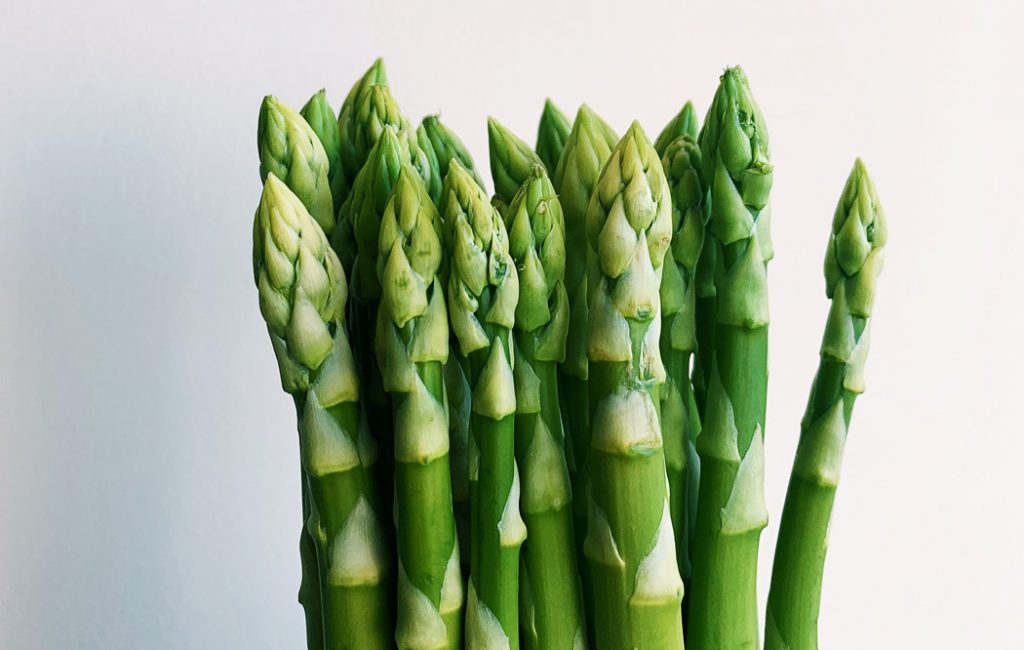
Among the most popular, and sometimes most loathed, vegetables in the world is asparagus. No doubt it has been so on and off for at least 2,000 years, because in the earliest known book of recipes, De Re Culinaria by Marcus Apicius, asparagus tips are recommended. He instructs that they should be pounded with pepper, lovage, coriander, savory, onion, wine, oil (presumably olive), eggs and a kind of fermented, fish-flavored sauce. All this should be baked, then seasoned with more pepper.
Sounds like a sort of a dip, perhaps a good alternative to hummus. I’ll have to experiment with it sometime.
From there, though, its history becomes murky. Culinary etymologists cannot find a source for its name, records show it popping up in France in the 1600s but no one knows how long it was there, and is documented in England 100 years prior, but no one knows how it get there either. In both cases one would presume it was the Romans, but there is no documentation of it. A similar situation hangs over its importation to the new world. In all these cases, it might simply have been birds.
Here in Iowa, now is the time to plant your asparagus, even though you won’t see your first crop until next year or even the year after. If you want to grow it organically, you may have some work to do before you plant. Select a spot with good drainage to the north or west of your garden so that fully grown asparagus does not shade your garden in late summer. Have the soil tested at your county extension office—you are looking for a pH of between 6.5 and 7.5. They can tell you how to amend your soil, if needed, to attain the proper pH.
Growing asparagus from seed can be dicey and laborious, and is not recommended for the first-time grower. It’s better to buy “crowns,” or root starts, from a reputable grower. There are many hybrids out there to choose from, and the most popular are the all-male varieties Jersey Giant and Jersey King. All-male hybrids out-yield mixes by three times.
Dig furrows about six inches deep, in rows five feet apart that are long enough to accommodate all your crowns spaced 18 inches apart. Cover and mulch and keep well watered but not soaked. When the sprouts start to peek up (probably next year), start watching for insect damage. Organic growers can fight off asparagus beetles and aphids with rotenone, or with chalcid wasps or ladybugs.
To grow the prized, milder white asparagus, simply do not allow chlorophyll to develop. Do this by shielding the sprouts from light using opaque plastic tunnels or boxes. If you like traditional techniques, just keep burying the sprouts as they grow toward the sun, then dig them back out.
Whether you grow it yourself, pick up the wonderful stuff at the local farmers’ market, or forage for Iowa’s abundant wild asparagus, one surefire way to convert even the most reticent asparagus eater is this simple method for grilled asparagus.
Easy Grilled Asparagus
1 pound asparagus, tough bottom ends snapped off
4 tablespoons extra virgin olive oil
1 tablespoon minced fresh garlic
1/4 cup fresh chopped herbs, such as basil, thyme, rosemary, tarragon, or parsley
Salt and black pepper, to taste
Soak the asparagus in cold saltwater for half an hour, then rinse and pat dry. Coat with the oil, then toss with the garlic, herbs, salt, and pepper. Refrigerate 1 hour to overnight.
Preheat grill to high temperature, then lay the spears in a flat row, crossways on the grate. Allow to char lightly (1-2 minutes), then turn and do the same on the other side.
Serve immediately with aioli or vinaigrette. Serves 4.
